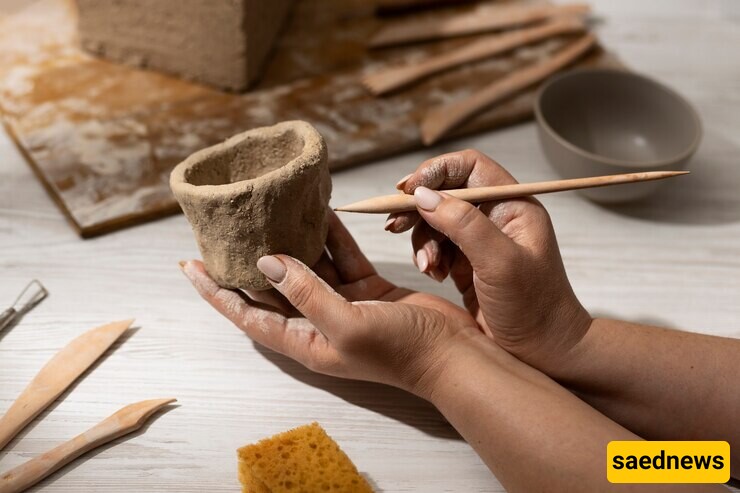SAEDNEWS: Ancient pottery offers invaluable insights into human history, from cultural practices to technological advancements. These artifacts help archaeologists piece together the stories of early civilizations and their evolution.

According to SAEDNEWS, pottery is more than just an ancient craft; it is a time capsule that preserves the secrets of human history. Found in archaeological sites across the globe, pottery shards offer clues about ancient lifestyles, trade networks, and technological progress. As one of the most durable materials created by early societies, pottery provides a direct link to our ancestors, illuminating their daily lives and cultural practices.

Ancient pottery was integral to everyday life, serving as storage containers, cooking vessels, and ceremonial objects. The design and function of pottery pieces reveal much about the needs and priorities of the people who made them. For instance, large storage jars indicate agricultural surpluses, while intricately decorated vessels suggest ceremonial or symbolic use.
Beyond practicality, pottery often reflected the artistic sensibilities of its creators. Patterns, motifs, and decorations on pottery pieces convey information about cultural identity, religious beliefs, and social structures. For example, the geometric patterns of Greek pottery and the symbolic designs of Native American ceramics demonstrate how art was used to convey deeper meaning.
The evolution of pottery techniques showcases humanity's ingenuity. Early hand-molded clay pots eventually gave way to more sophisticated methods, such as wheel-throwing. This innovation, which emerged around 3,500 BCE in Mesopotamia, revolutionized pottery production, allowing for greater uniformity and efficiency.
Firing techniques also advanced over time, with the development of kilns that could achieve higher temperatures. These advancements enabled the creation of more durable ceramics and the use of glazes for waterproofing and decoration. Such technological milestones reveal the interconnectedness of innovation and societal needs.

Pottery artifacts found far from their places of origin demonstrate the extensive trade networks of ancient civilizations. For example, Roman amphorae discovered in distant regions highlight the vast reach of Roman commerce. Similarly, Chinese porcelain unearthed in African and Middle Eastern sites reflects the historical significance of the Silk Road.
Trade not only transported goods but also ideas. Pottery styles and techniques often influenced neighboring cultures, fostering artistic and technological exchange. Archaeologists use these cross-cultural influences to trace migration patterns and interactions between ancient societies.
Pottery plays a crucial role in understanding ancient burial customs. Many cultures placed ceramic vessels in tombs as offerings for the afterlife. The size, shape, and decoration of these items provide insights into religious beliefs and social hierarchies. Some pottery pieces feature narrative art, depicting myths, historical events, or daily activities. Greek black-figure and red-figure pottery, for example, tell stories of gods, heroes, and legendary battles, offering a visual record of ancient storytelling traditions.
Interpreting pottery is not without challenges. Many artifacts are found as fragmented shards, requiring painstaking reconstruction. Additionally, archaeologists must carefully contextualize pottery finds to avoid misinterpretation. Despite these hurdles, pottery remains one of the most reliable tools for understanding ancient societies.
Ancient pottery is far more than broken pieces of clay—it is a testament to the creativity, resilience, and interconnectedness of early civilizations. Through careful study, archaeologists continue to uncover the rich tapestry of human history, revealing how the past shapes the present. As these timeless artifacts endure, they remind us of the ingenuity and cultural depth of our ancestors.

